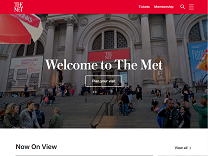The Pre-Raphaelite Legacy | The Metropolitan Museum of Art https://www.metmuseum.org/exhibitions/listings/2014/preraphaelite-legacy
This exhibition brings together some thirty objects from across the Museum and from local private collections to highlight the second generation of the Pre-Raphaelites, focusing on the key figures Edward Burne-Jones, William Morris, and Dante Gabriel Rossetti.
Moore Jr.

